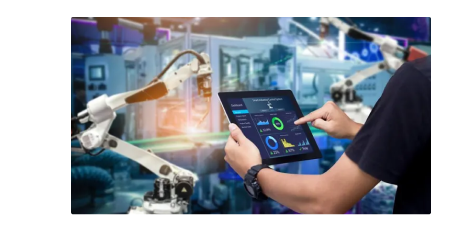#TakeCharge with #Aimshala
How make a career in Aerospace Propulsion System Design Engineer
A career as an Aerospace Propulsion System Design Engineer offers the opportunity to innovate and enhance the efficiency of propulsion systems used in aircraft and spacecraft. Individuals interested in this field typically require a robust academic background in aerospace engineering, mechanical engineering, or a related discipline. A bachelor's degree is essential, often followed by a master's degree focusing on propulsion systems. Practical experience through internships, co-op programs, or research projects is vital for employability. Networking with industry professionals and staying updated on advancements in propulsion technology are crucial. With a combination of education, hands-on experience, and a passion for aerospace, one can build a fulfilling career in this dynamic field.
Career in Aerospace Propulsion System Design Engineer
What are the roles and responsibilities in Aerospace Propulsion System Design Engineer?
- Designing Propulsion Systems : Aerospace Propulsion System Design Engineers create and optimize designs for engines and propulsion systems to meet performance and regulatory requirements.
- Conducting Simulations : They utilize advanced simulation software to model propulsion systems, predicting performance under various conditions.
- Testing and Validation : These engineers oversee testing processes, analyzing data to validate designs and ensure compliance with safety standards.
- Collaborating with Teams : They work closely with other engineers, scientists, and stakeholders to integrate propulsion systems with overall vehicle designs.
- Research and Development : Aerospace Propulsion System Design Engineers engage in R&D to innovate new technologies and improve existing propulsion systems.
What education is required to study Aerospace Propulsion System Design Engineer
Check out the dates of the total number of candidates who have appeared in the CUET 2022 exam from the below table.
Stream |
Graduation |
After Graduation |
After Post Graduation |
|
|
Path 1 |
Completion of high school with a strong focus on mathematics and physics. |
Bachelor of Science in Aerospace Engineering or Mechanical Engineering. |
Master's degree in Aerospace Engineering or specialized fields such as Propulsion Systems. |
Ph.D. in Aerospace Engineering for those pursuing research or academic careers. |
|
Path 2 |
Completion of high school with emphasis on science and technology subjects. |
Bachelor's degree in Mechanical Engineering with a focus on aerospace applications. |
Master's degree in Aerospace Engineering or related fields. |
Certifications in specialized aerospace technologies or project management. |

Feeling unsure about
your future?
Let's find the perfect career path for you!
with AI-powered career
guidance

What are the key skills required for Aerospace Propulsion System Design Engineer
- Analytical Skills - These skills are essential for interpreting complex data and making informed engineering decisions.
- Communication Skills - Effective communication is vital for collaborating with teams and presenting findings to stakeholders.
- Problem-Solving Skills - The ability to identify and resolve technical challenges in propulsion system design is crucial for success.
- Technical Skills - Proficiency in CAD software and simulation tools is important for designing and testing propulsion systems.
- Project Management Skills - Managing engineering projects efficiently, including budgeting and timelines, is key to successful outcomes.
What are the career opportunities in Aerospace Propulsion System Design Engineer?
- Aerospace Engineer - Aerospace Engineers design and develop aircraft, spacecraft, satellites, and missiles, focusing on aerodynamics and propulsion.
- Systems Engineer - Systems Engineers integrate different engineering disciplines to ensure that all components of aerospace systems work together effectively.
- Mechanical Engineer - Mechanical Engineers work on the design and analysis of mechanical systems, often collaborating with aerospace teams on propulsion technologies.
- Propulsion Engineer - Propulsion Engineers specialize in the design and testing of engines and propulsion systems for various aerospace applications.
- Research Scientist - Research Scientists in aerospace focus on developing new technologies and materials to improve propulsion systems and overall aircraft performance.
What is the salary and demand for Aerospace Propulsion System Design Engineer?
- Salary Overview - The typical salary for Aerospace Propulsion System Design Engineers ranges from $70,000 for entry-level positions to over $120,000 for experienced professionals, with variations based on education and location.
- Regional Salary Variations - Salaries can vary significantly by region; for example, engineers in aerospace hubs like California may earn more than those in other states.
- Current Job Market Demand - The demand for Aerospace Propulsion System Design Engineers is increasing due to advancements in aerospace technology and the growth of the aerospace industry.
- Future Demand Projections - Future demand for Aerospace Propulsion System Design Engineers is expected to rise as the industry focuses on sustainable aviation and space exploration.
Leading companies for careers in Aerospace Propulsion System Design Engineer

Boeing

Lockheed Martin

Northrop Grumman

Raytheon Technologies

Airbus

General Electric Aviation

Pratt & Whitney

Rolls-Royce
What are the best colleges for Aerospace Propulsion System Design Engineer in India?
Undergraduate
College |
Location |
Website |
|
Indian Institute of Technology, Bombay |
Mumbai |
https://www.iitb.ac.in |
|
Indian Institute of Technology, Kharagpur |
Kharagpur |
https://www.iitkgp.ac.in |
|
Indian Institute of Technology, Madras |
Chennai |
https://www.iitm.ac.in |
|
Indian Institute of Technology, Kanpur |
Kanpur |
https://www.iitk.ac.in |
|
Punjab Engineering College |
Chandigarh |
https://pec.ac.in |
Postgraduate
College |
Location |
Website |
|
Indian Institute of Technology, Bombay |
Mumbai |
https://www.iitb.ac.in |
|
Indian Institute of Technology, Kharagpur |
Kharagpur |
https://www.iitkgp.ac.in |
|
Indian Institute of Science |
Bengaluru |
https://www.iisc.ac.in |
|
Indian Institute of Technology, Madras |
Chennai |
https://www.iitm.ac.in |
|
National Institute of Technology, Tiruchirappalli |
Tiruchirappalli |
https://www.nitt.edu |
What are the best colleges for Aerospace Propulsion System Design Engineer in Abroad?
College |
Location |
Website |
|
Massachusetts Institute of Technology |
Cambridge, Massachusetts, USA |
https://www.mit.edu |
|
California Institute of Technology |
Pasadena, California, USA |
https://www.caltech.edu |
|
Stanford University |
Stanford, California, USA |
https://www.stanford.edu |
|
University of Cambridge |
Cambridge, United Kingdom |
https://www.cam.ac.uk |
|
Imperial College London |
London, United Kingdom |
https://www.imperial.ac.uk |
What are the top entrance exams in India for pursuing a career in Aerospace Propulsion System Design Engineer
College |
Tentative Date |
UG/PG |
Important Elements |
Website |
|
Indian Institute of Technology, Bombay |
April |
Postgraduate |
Engineering Mathematics, Physics, and General Aptitude. |
https://www.iitb.ac.in |
|
Indian Institute of Technology, Kharagpur |
May |
Undergraduate |
Mathematics, Physics, and Chemistry. |
https://www.iitkgp.ac.in |
|
Indian Institute of Science |
January |
Postgraduate |
Engineering Mathematics, Physics, and Analytical Skills. |
https://www.iisc.ac.in |
|
National Institute of Technology, Tiruchirappalli |
June |
Undergraduate |
Mathematics, Physics, and Chemistry. |
https://www.nitt.edu |
|
California Institute of Technology |
April |
Postgraduate |
Mathematics, Physics, and Engineering Concepts. |
https://www.caltech.edu |
Pros & Cons of a Career in Aerospace Propulsion System Design Engineer
Pros
- Aerospace Propulsion System Design Engineers contribute to groundbreaking advancements in aviation and space exploration, making their work highly impactful.
- The field offers competitive salaries and benefits, especially for those with advanced degrees and specialized skills.
- Professionals in this field work in a dynamic environment with opportunities for continuous learning and professional development.
- The career provides a chance to work on innovative projects, often collaborating with leading experts in the aerospace industry.
Cons
- The job can be demanding with long hours, especially during project deadlines or testing phases.
- Some roles may require extensive travel for field tests or collaboration with other teams, which can be challenging.
- The aerospace industry can be subject to economic fluctuations, potentially leading to job instability during downturns.
- The work can sometimes be isolating, particularly for those engaged in extensive design and simulation tasks away from team interactions.
Did you find this information helpful?


Report
0 out of 0 found this helpful


